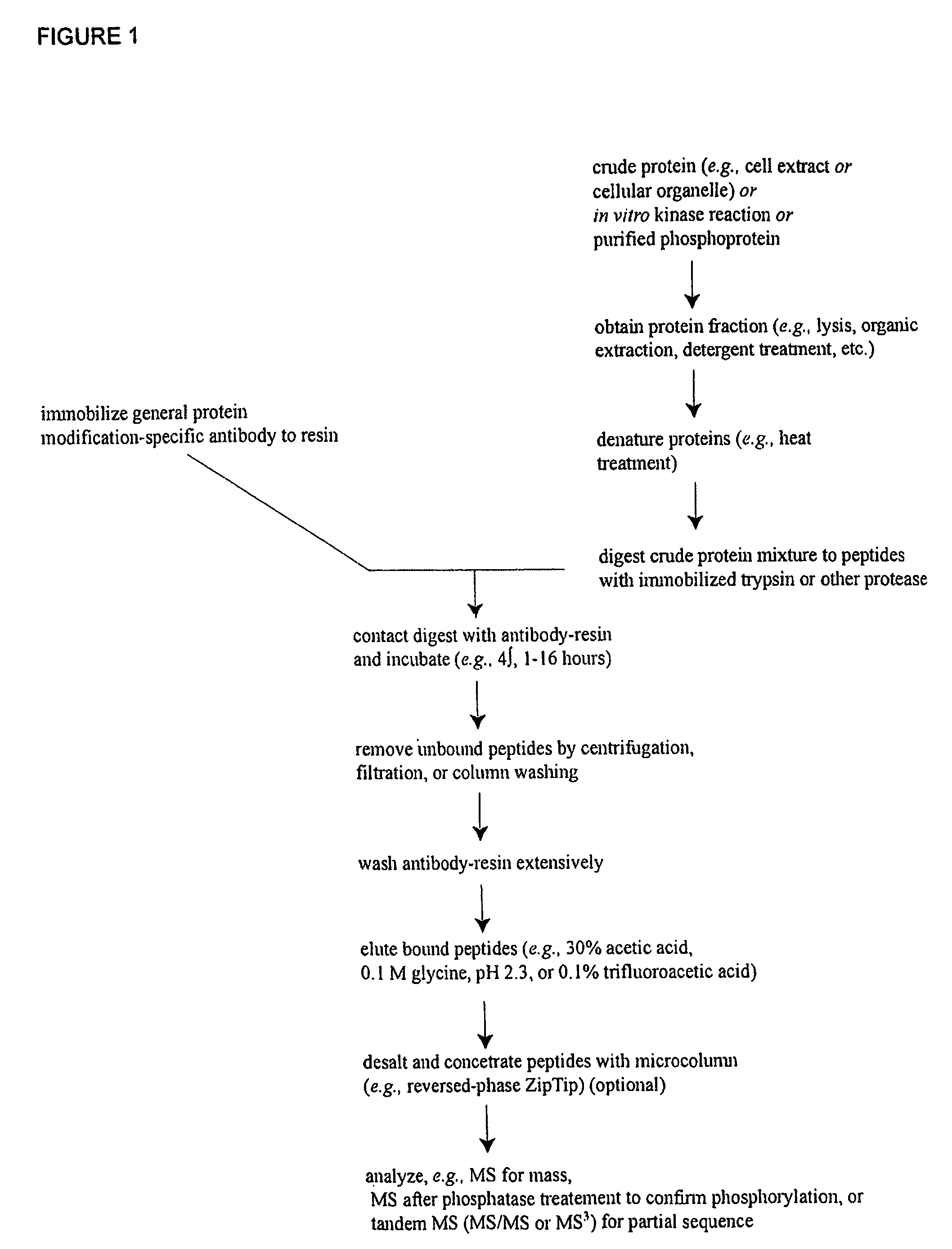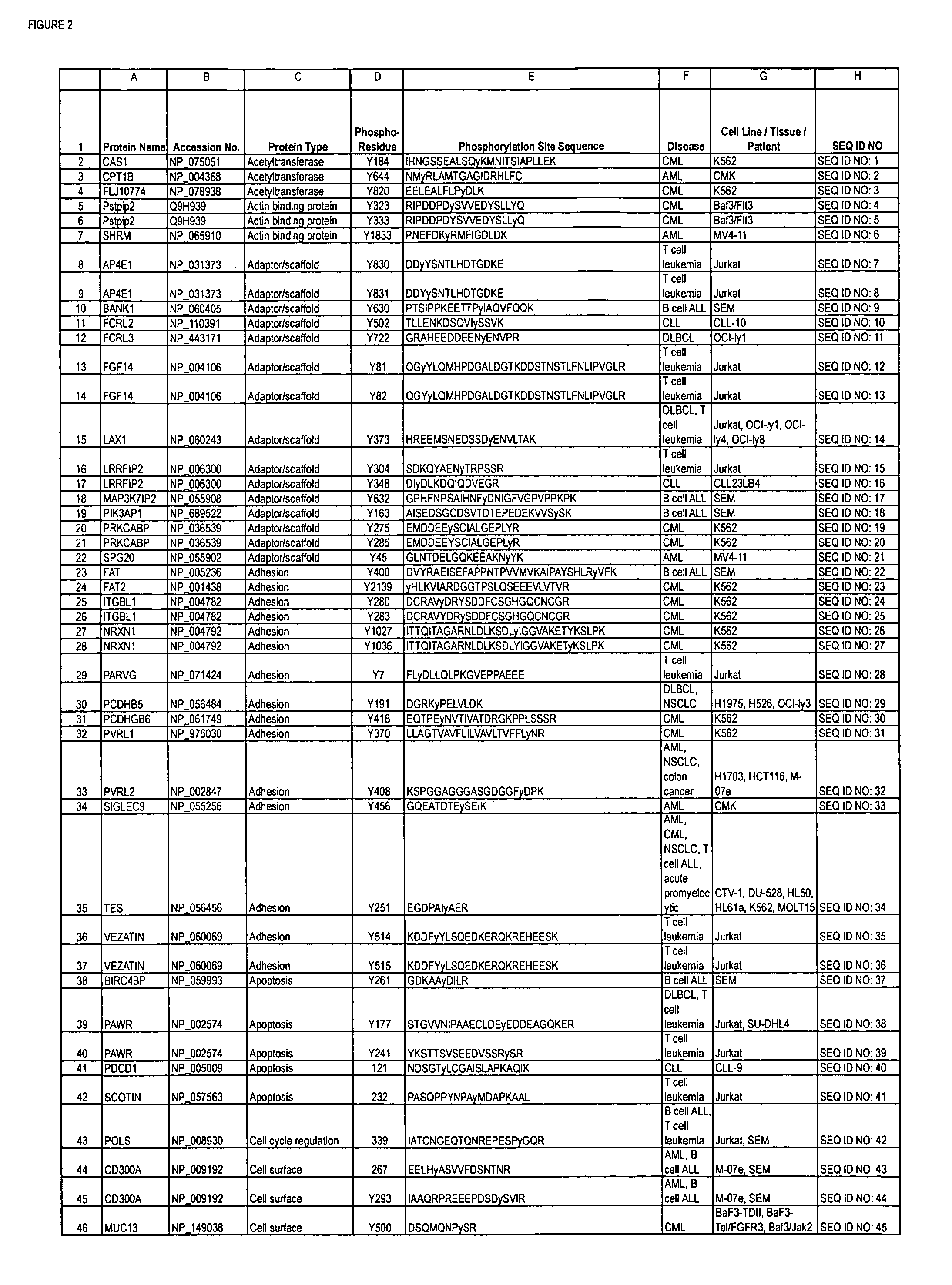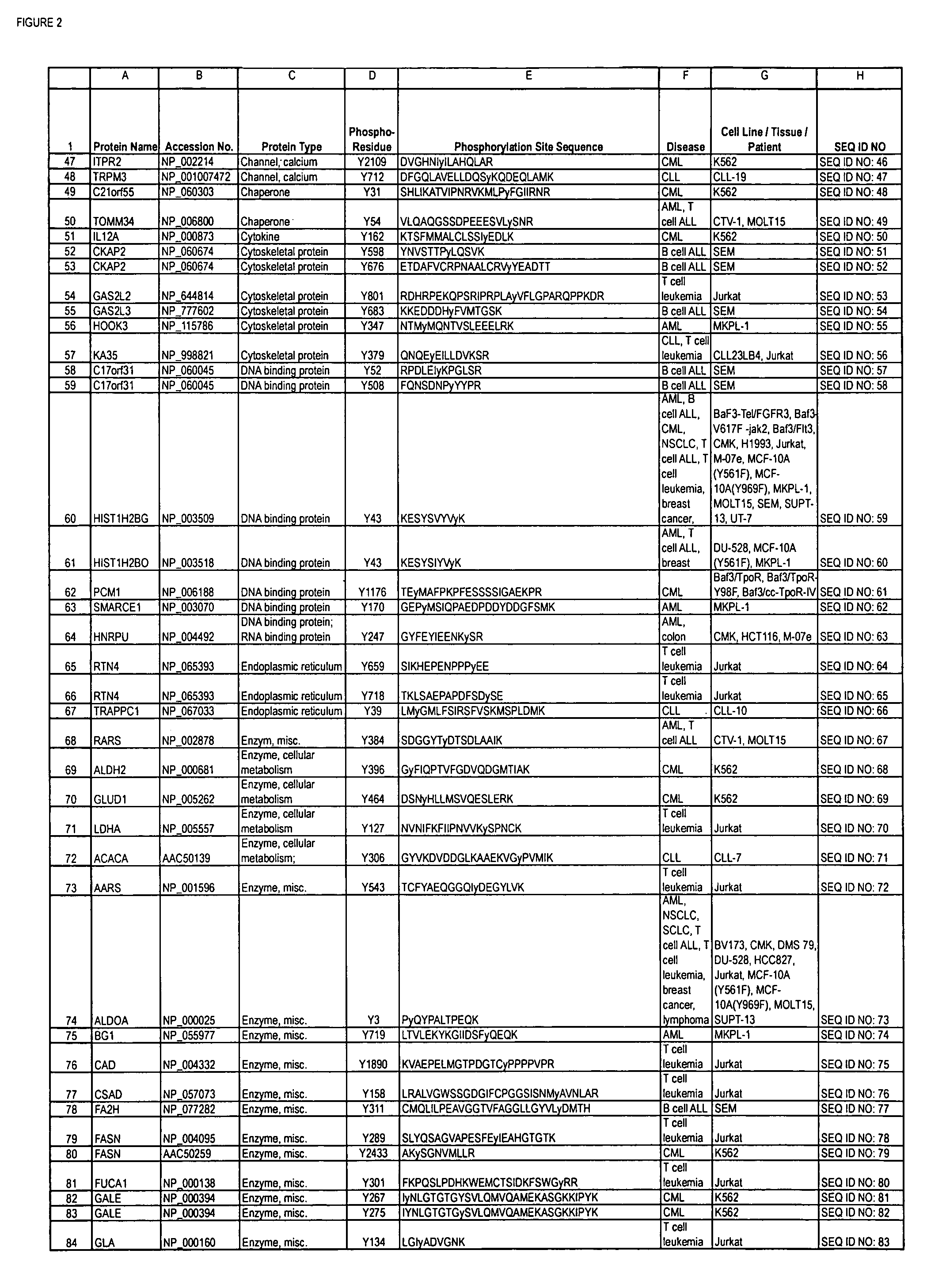Reagents for the detection of protein phosphorylation in leukemia signaling pathways
a technology of protein phosphorylation and signaling pathway, which is applied in the field of antibodies and peptide reagents for the detection of protein phosphorylation, and to protein phosphorylation in cancer, can solve the problems of anemia, immunodeficiency and coagulation deficiencies, and remains fatal in 80% of treated patients, and is not yet well understood
- Summary
- Abstract
- Description
- Claims
- Application Information
AI Technical Summary
Benefits of technology
Problems solved by technology
Method used
Image
Examples
example 1
Isolation of Phosphotyrosine-Containing Peptides from Extracts of Leukemia Cell Lines and Identification of Novel Phosphorylation Sites
[0164]In order to discover previously unknown Leukemia-related signal transduction protein phosphorylation sites, IAP isolation techniques were employed to identify phosphotyrosine- and / or phosphoserine-containing peptides in cell extracts from the following human Leukemia cell lines and patient cell lines: Jurkat, K562, SEM, HT-93, CTV-1, MOLT15, CLL-9, H1993, OCI-ly3, KBM-3, UT-7, SUPT-13, MKPL-1, HU-3, M-07e, HU-3, EHEB, SU-DHL1, OCI-ly1, DU-528, CMK, OCI-ly8, ELF-153, OCI-ly18, MEC-1, Karpas 299, CLL23LB4, OCI-ly12, M01043, CLL-10, HL60, Molm 14, MV4-11, CLL-1202, EOL-1, CLL-19, CV-1, PL21; or from the following cell lines expressing activated BCR-Abl wild type and mutant kinases such as: Baf3-p210 BCR-Abl, Baf3-M351T-BCR-ABL, Baf3-E255K-BCR-Abl, Baf3-Y253F-BCR-Abl, Baf3-T315I-BCR-ABI, 3T3-v-Abl; or activated Flt3 kinase such as Baf3-FLT3 or FLT3...
example 2
Production of Phospho-Specific Polyclonal Antibodies for the Detection of Leukemia-related Signaling Protein Phosphorylation
[0178]Polyclonal antibodies that specifically bind a Leukemia-related signal transduction protein only when phosphorylated at the respective phosphorylation site disclosed herein (see Table 1 / FIG. 2) are produced according to standard methods by first constructing a synthetic peptide antigen comprising the phosphorylation site sequence and then immunizing an animal to raise antibodies against the antigen, as further described below. Production of exemplary polyclonal antibodies is provided below.
A. SCAMP3 (Tyrosine 41)
[0179]A 14 amino acid phospho-peptide antigen, QYATLDVy*NPFETR (where y*=phosphotyrosine) that corresponds to the sequence encompassing the tyrosine 41 phosphorylation site in human SCAMP3 vesicle protein (see Row 280 of Table 1; SEQ ID NO: 279), plus cysteine on the C-terminal for coupling, is constructed according to standard synthesis technique...
example 3
Production of Phospho-Specific Monoclonal Antibodies for the Detection of Leukemia-Related Signaling Protein Phosphorylation
[0186]Monoclonal antibodies that specifically bind a Leukemia-related signal transduction protein only when phosphorylated at the respective phosphorylation site disclosed herein (see Table 1 / FIG. 2) are produced according to standard methods by first constructing a synthetic peptide antigen comprising the phosphorylation site sequence and then immunizing an animal to raise antibodies against the antigen, and harvesting spleen cells from such animals to produce fusion hybridomas, as further described below. Production of exemplary monoclonal antibodies is provided below.
[0187]A 15 amino acid phospho-peptide antigen, LSDy*GVTVPCSTDFR (where y*=phosphotyrosine) that corresponds to the sequence encompassing the tyrosine 38 phosphorylation site in human ADAMTS14 protease (see Row 368 of Table 1 (SEQ ID NO: 142)), plus cysteine on the C-term...
PUM
| Property | Measurement | Unit |
|---|---|---|
| concentration | aaaaa | aaaaa |
| pH | aaaaa | aaaaa |
| pH | aaaaa | aaaaa |
Abstract
Description
Claims
Application Information
 Login to View More
Login to View More - R&D
- Intellectual Property
- Life Sciences
- Materials
- Tech Scout
- Unparalleled Data Quality
- Higher Quality Content
- 60% Fewer Hallucinations
Browse by: Latest US Patents, China's latest patents, Technical Efficacy Thesaurus, Application Domain, Technology Topic, Popular Technical Reports.
© 2025 PatSnap. All rights reserved.Legal|Privacy policy|Modern Slavery Act Transparency Statement|Sitemap|About US| Contact US: help@patsnap.com



